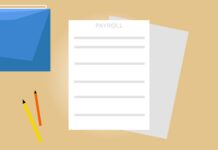Both the Payroll & Human Resources(HR) are separate functions in an Organization. But, for a smooth business operation, both these functions need to collaborate. Together they handle different aspects of employee management like compensation, benefits, data privacy, onboarding & offboarding. This article explores the synergy between payroll and HR departments, the benefits of integrating their systems, and best practices for managing employee data and confidentiality.
Collaboration Between Payroll and HR Departments
Effective collaboration between payroll and HR ensures accurate and efficient management of employee compensation and benefits.
- Data Consistency and Accuracy:
- HR departments are responsible for maintaining accurate employee records, including personal information, job titles, and salaries.
- Payroll relies on these records to ensure timely and accurate compensation. Collaboration minimizes discrepancies.
- Compliance and Risk Management:
- Payroll and HR departments jointly ensure compliance with tax laws, labor regulations, and company policies.
- This collaboration mitigates risks related to employee disputes, tax penalties, and data breaches.
- Onboarding and Offboarding:
- During onboarding, HR provides payroll with new employee details such as bank accounts and tax file numbers.
- For offboarding, HR supplies termination details to payroll to finalize payouts and benefits.
- Benefits Administration:
- HR oversees employee benefits like health insurance and retirement plans.
- Payroll ensures accurate deductions and contributions for these benefits.
- Employee Support:
- Collaborative teams address employee queries regarding salaries, benefits, and leaves promptly.
- Coordinated responses foster employee satisfaction and trust.
Benefits of Integrating Payroll and HR Systems
- Centralized Data Management:
- Integrating payroll and HR systems allows centralized storage of employee data.
- Reduces data redundancy and ensures consistency.
- Automated Workflows:
- Automates processes like onboarding, benefits enrollment, and time-off requests.
- Reduces manual intervention, errors, and processing times.
- Improved Compliance:
- Integrated systems automatically apply the latest tax rates and labor regulations.
- Facilitates accurate reporting and reduces compliance risks.
- Enhanced Reporting and Analytics:
- Combines HR and payroll data for comprehensive analytics.
- Enables better workforce planning, compensation analysis, and compliance monitoring.
- Streamlined Onboarding and Offboarding:
- New employee data entered into the HR system automatically updates payroll.
- Ensures seamless benefits enrollment and accurate compensation from day one.
Sharing Employee Data and Information Between Departments
- Data Types:
- Personal Information: Names, addresses, contact details, tax file numbers.
- Employment Details: Job titles, departments, salary grades, start dates.
- Benefits and Deductions: Health insurance, retirement plans, salary sacrifices.
- Leave and Attendance: Leave balances, timesheets, and attendance records.
- Data Sharing Methods:
- Integrated Systems: Allows real-time data sharing between HR and payroll.
- Secure APIs: APIs enable data synchronization between different software platforms.
- Manual Data Transfers: Sharing data via secure spreadsheets or reports when integration is not possible.
- Security and Confidentiality:
- Use encryption for data transfers and access control to limit data visibility.
- Regular audits to ensure compliance with data privacy regulations.
Developing and Implementing Effective Employee Onboarding and Offboarding Processes
- Employee Onboarding Process:
- Pre-Joining Preparations:
- HR collects new employee data (tax file numbers, superannuation details).
- Payroll creates the new employee profile and sets up compensation.
- First Day Orientation:
- HR introduces new hires to company policies and benefits.
- Payroll ensures accurate first paycheck processing.
- Benefits Enrollment:
- HR assists with benefits enrollment (health insurance, retirement plans).
- Payroll sets up deductions and contributions.
- Training and Development:
- HR organizes initial training programs.
- Payroll tracks training allowances or stipends.
- Probation Period Review:
- HR conducts performance reviews post-probation.
- Payroll adjusts salary or benefits based on reviews.
- Pre-Joining Preparations:
- Employee Offboarding Process:
- Resignation or Termination Notification:
- HR notifies payroll of resignation or termination.
- Payroll calculates final payouts, unused leave, and benefits.
- Exit Interview:
- HR conducts an exit interview to collect feedback and return company property.
- Payroll ensures all deductions (e.g., company assets) are accurate.
- Final Paycheck Processing:
- Payroll processes the final paycheck, including unpaid wages and benefits.
- HR coordinates with payroll to issue the Employment Separation Certificate.
- Benefit Termination:
- HR informs benefits providers about termination.
- Payroll stops deductions and contributions.
- Resignation or Termination Notification:
Employee Data Privacy and Confidentiality in Payroll and HR
- Data Collection and Storage:
- Collect only necessary data and store it securely with encryption and access control.
- Regularly audit data access logs to identify potential breaches.
- Access Control and Role-Based Permissions:
- Implement role-based permissions to limit access to sensitive data.
- Only authorized payroll and HR personnel should access employee data.
- Compliance with Data Privacy Laws:
- Ensure compliance with data privacy laws like GDPR, CCPA, and Australia’s Privacy Act 1988.
- Include data privacy clauses in employee contracts and policies.
- Employee Consent and Awareness:
- Obtain employee consent for data collection and sharing.
- Inform employees about how their data is used and protected.
- Secure Data Transfers:
- Use encryption and secure transfer protocols for data sharing.
- Avoid sharing sensitive data via email or unsecured channels.
- Incident Response Plan:
- Develop a response plan for data breaches, including notification procedures and mitigation steps.
- Conduct regular security training for payroll and HR staff.
Conclusion
For smooth compensation management, compliance & employee satisfaction in a company, a collaboration between payroll & HR departments is must needed. When a company integrate payroll & HR and following best practices for onboarding and offboarding ensure a seamless payroll cycle. By maintaining data privacy and role-based permissions, organizations can build employee trust and stay compliant with global privacy regulations.
FAQs
HR provides payroll with accurate employee data, including salaries, benefits, tax file numbers, and work hours. HR also ensures compliance with employment contracts, awards, and regulations.
While HR and payroll are separate departments in larger organizations, HR often oversees payroll in smaller businesses. HR ensures accurate data collection and compliance while payroll manages salary processing.
HR Duties: Hiring, onboarding, and offboarding
Employee record maintenance
Benefits administration and employee relations
Payroll Duties: Salary and wage processing
Tax and benefits deductions
Payroll reporting and compliance
Employee onboarding
Payroll data collection
Salary and benefits calculations
Payroll approval and processing
Issuance of pay slips and reporting
No, payroll and HR are distinct functions but work closely together. HR handles employee data, benefits, and compliance, while payroll processes salaries and taxes.
Collect Employee Data: Gather data on new hires, terminations, benefits, and deductions.
Verify Time and Attendance: Check employee work hours and leave balances.
Calculate Salaries and Deductions: Apply the correct pay rates, bonuses, and deductions.
Process Payroll: Run payroll, issue pay slips, and transfer salaries.
Report and File Taxes: File PAYG, payroll tax, and superannuation contributions.












